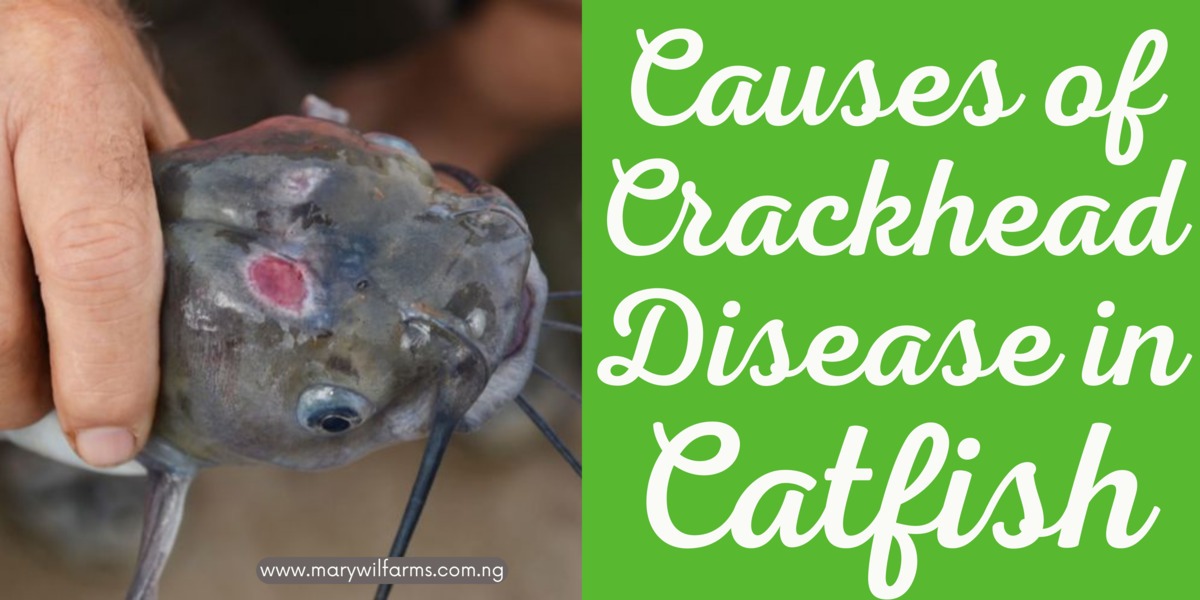Catfish Diseases & Health
How to Cure Dropsy in Catfish

In today's post, you will learn how to cure dropsy in catfish. Let me quickly say that dropsy is not a disease but a symptom of an underlying disease in fish.
If the underlying disease is detected earlier, it becomes easily treatable. If noticed at the later or advanced stage, am afraid it will be very difficult for the fish to survive.
Catfish farmers are advised to monitor their fish to give them better treatment anytime there is funny behaviour.
Like humans and other animals, fish suffer from diseases and parasites. There are ways to treat fish disease but our focus here would be on how to treat dropsy alone.
What Is Dropsy?
Dropsy is a condition where a fish's body swells due to fluid retention, often indicating an underlying health issue. It is also known as edema. Dropsy is one of the common diseases in catfish that mostly occurs when the pond is overstocked.
Here is a breakdown of what dropsy signifies:
- Symptom, not a disease: Dropsy indicates malfunctioning kidneys or gills in fish, but it does not pinpoint the exact cause.
- Underlying causes: Several issues can cause dropsy, including bacterial infections, parasites, or organ problems like liver dysfunction.
- Appearance: The most noticeable sign of dropsy is a swollen abdomen, often accompanied by protruding scales that resemble a pinecone.
How to Treat/ Cure Dropsy in Catfish
The first sign to notice of any fish with such an underlying disease is bloating. As earlier explained, signs of dropsy especially in catfish are not a disease, it is treatable if discovered at an early stage. Once you notice unusual swelling in your fish that tells you that there is something wrong in the system.
Usually, bloating in fish is caused by an infection that could lead to kidney failure. Once the kidney fails, the next noticeable thing is that the scales will begin to protrude.
At this stage, it shows a late sign of dropsy. What I can't tell you is if any fish can survive any kind of treatment at this stage.
Now, to treat dropsy we use salt (Epsom Salt), not table salt used for cooking or aquarium salt either. Epsom Salt is a bitter salt usually used in medicine. It is a magnesium sulfate that helps fish to release their bloating and to treat whatever injury or disease it has.
Magnesium sulfate renews the fish slime just to expel any infection in the body.
Preparation
Mixture 1
Dissolve 4 teaspoonfuls of Epson salt in 5 litres of water. In a situation where you have only one fish to treat just use 1 litre of water with a teaspoonful of the salt for maximum effect. Pour the water into a bowl, dissolve the Epsom salt inside it, and stir very well.
For better results, you should use water from the same pond/ tank where you removed the fish, to avoid temperature shock.
Now that your solution is ready, introduce the fish to the bowl containing the salt solution then leave it for about 5 minutes before removing it. Better have a timer so as not to allow the fish to overstay in the solution.
While your fish is still inside the bowl continue to observe its activities. When it seems it has stopped moving actively is an indication that it can no longer cope with the salt content. What to do at this stage is to quickly remove it from the bowl into another bowl of water (recovery bowl) for another 2 minutes before you can continue treatment.
Next, mix a solution called Methylene Blues in another bowl of water to continue the dropsy treatment. Methylene blue is used for treatment against skin and gill flukes, fungus and velvet disease, and fungus development of eggs.
The methylene could be used for newly harvested eggs to maximize fungus growth on the eggs for greater success when breeding. What methylene does is treat its fin rot as well as infection on the head.
Mixture 2
The suggested mixture for the methylene blue is 1 teaspoonful in every 10 gallons of water. For your 1 litre of water add a small amount of methylene just to get the colour of the water changed to blue. The moment you get the desired colour transfer the fish to the solution and leave it for another 2-3 minutes.
The essence of the mixture is to treat fungus growth on its wen as well as the fin. After some minutes remove the fish to another pond where you can monitor its recovery progress for another two days. If after two days you discover the fish is healed then you can transfer it to a permanent pond.
Wrap up
To cure dropsy in catfish is very simple but the how is what people find very difficult. Many fish farmers have lost their fish as a result of this uncommon condition.
Always monitor the activities of your fish and when you notice funny behaviours search for solutions. Bloating is one of the common signs to note for dropsy. Get magnesium sulfate and methylene blue handy and refer back to this article when needed.
Now that you have seen how to treat dropsy in fish you can share the article for others to learn too.
In case you have questions or further suggestions on how to cure dropsy we did not include it in this piece just use the comment box to share what you know with us.



recent comments